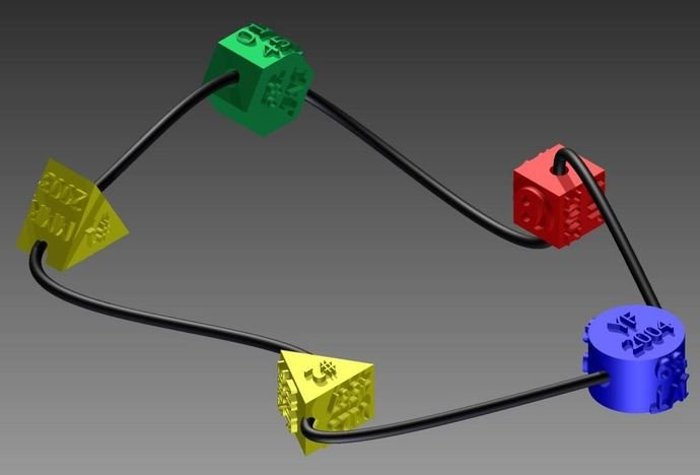VaxBeads Wins 3D Printers for Peace Contest

These 3D printed beads could hold the immunization history of children in underdeveloped regions of the world. Courtesy of MTU.
Latest News
September 6, 2013
In the wake of stories clamoring over how the future would be filled with 3D printed guns, Joshua Pearce, associate professor of materials science and engineering, and electrical and computer engineering at Michigan Technological University (MTU) started the 3D Printers for Peace contest. The contest was intended to demonstrate different ways in which additive manufacturing (AM) could be a positive force for change.
The contest has come to a close with John Van Tuyl, a master’s student in mechanical engineering at McMaster University, winning the top prize for VaxBeads. Tuyl’s design is a series of 3D printed beads that display the vaccination history of children in underdeveloped countries.
“We have the capacity to immunize against many diseases, but it’s not getting accomplished,” said Tuyl. “They [the beads] are more permanent than paper, and I thought families would be more likely to save the beads than standard vaccination cards.”
Each bead is printed in a different color and shape to represent a specific vaccine. Each child’s initials are also printed into the beads, along with details about the wearer in the form of numbers to communicate the child’s age and an I.D. Code. Not only are the beads more decorative than paper vaccination cards, they are more resilient to nature, and are less likely to be lost.
To me, the beads are the quintessence of a solid design. They are simple, effective, and easy to produce. It wouldn’t require that much effort for the organizations that have taken up the responsibility of vaccination to add a 3D printer to their effects. Having an AM system around might even end up being useful for more than just printing out the beads.
Tuyl won a Series 1 3-D Printer for his efforts. The open source system was donated by Type A Machines. The second place entry won a RepRap Prusa Mendel model for a solar-powered water purification cone. Now if only water purification devices and VaxBeads could make as many headlines as guns, 3D printing might make the news in a better light.
Below you’ll find a video about bringing 3D printers to underdeveloped regions, inspired by, and in cooperation with, the 3D Printers for Peace initiative.
Subscribe to our FREE magazine, FREE email newsletters or both!
Latest News
About the Author
John NewmanJohn Newman is a Digital Engineering contributor who focuses on 3D printing. Contact him via [email protected] and read his posts on Rapid Ready Technology.
Follow DE






